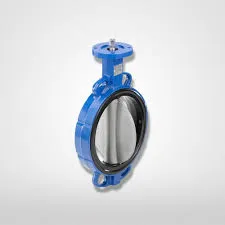Samh . 08, 2024 19:22 Back to list
air release valve
Understanding Air Release Valves Their Functionality and Importance
Air release valves play a vital role in various hydraulic and pneumatic systems, ensuring operational efficiency and safety. These devices are designed to automatically release trapped air or gas from pipelines, tanks, and other closed systems, preventing pressure build-up and potential damage. Understanding the functionality, types, and importance of air release valves is crucial for engineers, technicians, and anyone involved in fluid management.
Functionality of Air Release Valves
The primary function of an air release valve is to eliminate accumulated air or gas from a system. When water or any fluid flows through a pipeline, it can create air pockets due to changes in pressure or flow rates. These air pockets can disrupt the flow, leading to cavitation, reduced efficiency, and even equipment damage. An air release valve effectively mitigates these issues by allowing trapped air to escape.
Typically, air release valves operate through a float mechanism. When the water level rises within the valve body, the float ascends, causing the valve to close and prevent water from escaping. Conversely, when the water level drops, the float falls, opening the valve to release trapped air. This automatic operation ensures a continuous flow of liquid without any hindrance from air entrapment.
Types of Air Release Valves
There are various types of air release valves designed to suit specific applications
. The most common types include1. Simple Air Release Valves These valves operate on the basic principle of floatation. They are suitable for smaller pipelines and applications where air release is infrequent.
2. Combination Air Valves These valves act as both air release and air vacuum valves. They can release air during filling operations and allow air to enter the pipeline during draining or when negative pressure occurs.
3. Self-venting Air Valves These valves continuously vent air while the system is in operation, ensuring optimal performance without manual intervention.
air release valve

4. Pressure Relief Air Valves Designed to maintain a specific pressure range, these valves release air to prevent pressure build-up, ensuring safety and preventing system failure.
Importance in Various Industries
Air release valves are crucial in a wide range of industries, including water treatment, oil and gas, chemical processing, and HVAC (heating, ventilation, and air conditioning) systems. In water distribution systems, for example, failure to ventilate trapped air can lead to pipe bursts, creating costly repairs and service interruptions. Similarly, in chemical processes, unmonitored pressure changes due to trapped gas can result in hazardous situations.
In HVAC systems, air release valves help maintain optimal system pressure and efficiency, improving energy consumption and system longevity. Their role in preventing air pockets ensures that pumps operate at their peak performance, which is essential for maintaining desired temperature and environmental conditions.
Maintenance and Best Practices
To ensure the effective operation of air release valves, regular maintenance is essential. This includes inspecting the valves for any signs of wear or damage, ensuring that they are clean and free from debris, and testing their functionality periodically. Proper installation is equally important; valves must be placed at high points in the system where air tends to accumulate.
In addition, operators should be aware of the specific requirements of their systems and choose the appropriate type of air release valve based on factors such as pipe diameter, fluid type, and pressure conditions.
Conclusion
Air release valves are indispensable components of fluid systems, playing a critical role in maintaining efficiency, safety, and longevity. By automatically releasing trapped air, these valves prevent pressure build-up and pump cavitation, thereby safeguarding the integrity of pipelines and other equipment. Understanding their functionality, types, and maintenance requirements is essential for anyone involved in fluid management. As technology advances, the design and capabilities of air release valves will continue to evolve, enhancing their performance and reliability across various applications.
Share
-
Reliable Wafer Type Butterfly Valves for Every IndustryNewsJul.25,2025
-
Reliable Flow Control Begins with the Right Ball Check ValveNewsJul.25,2025
-
Precision Flow Control Starts with Quality ValvesNewsJul.25,2025
-
Industrial Flow Control ReliabilityNewsJul.25,2025
-
Engineered for Efficiency Gate Valves That Power Industrial PerformanceNewsJul.25,2025
-
Empowering Infrastructure Through Quality ManufacturingNewsJul.25,2025